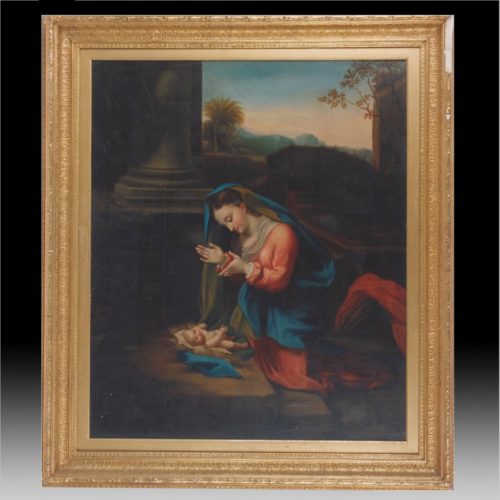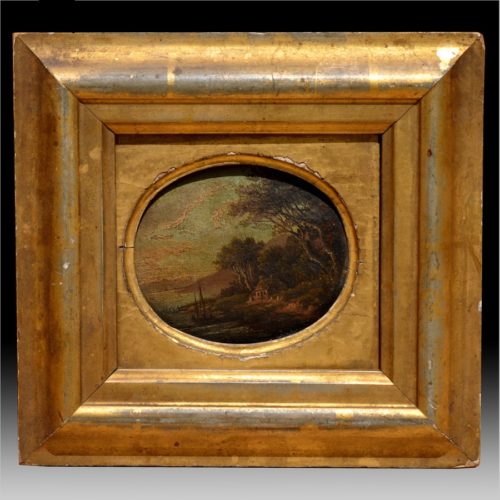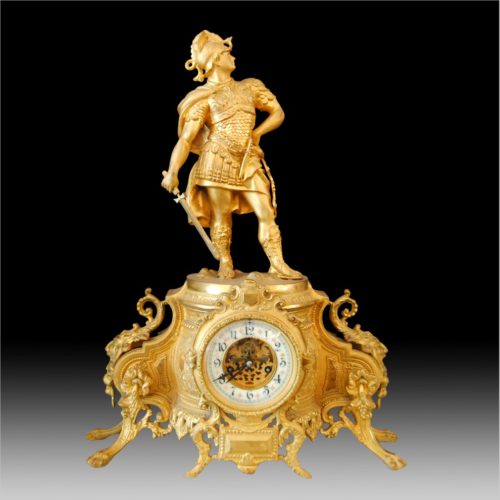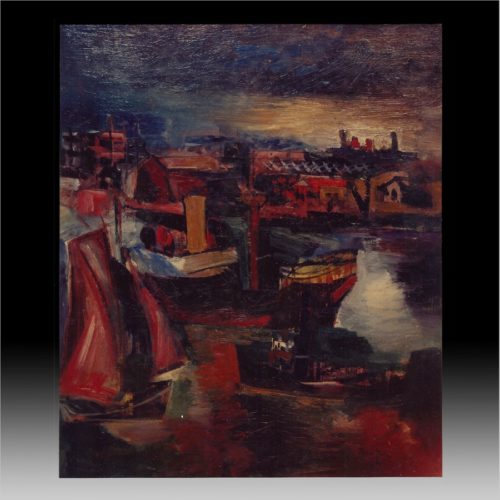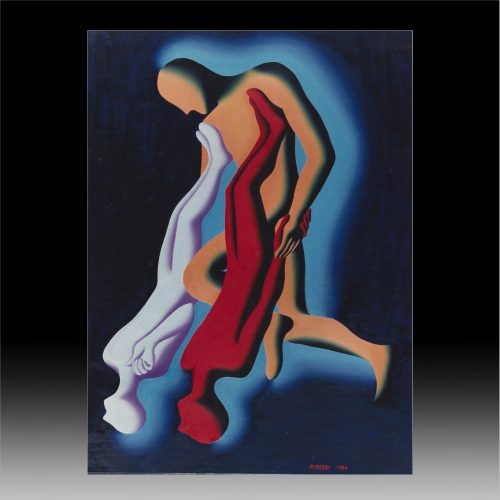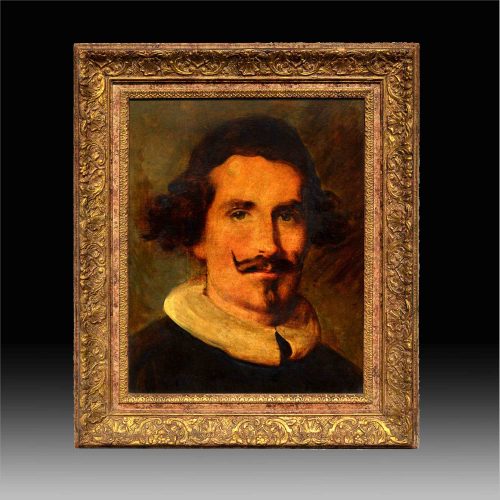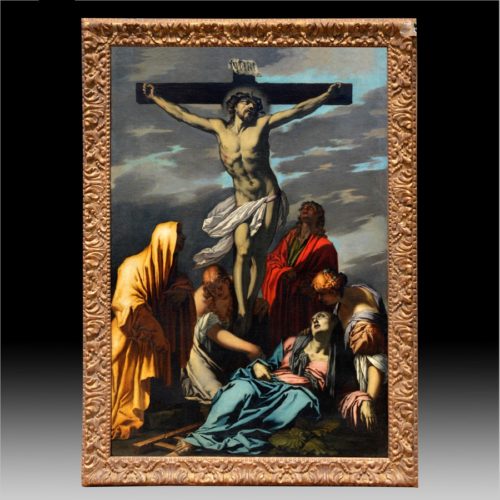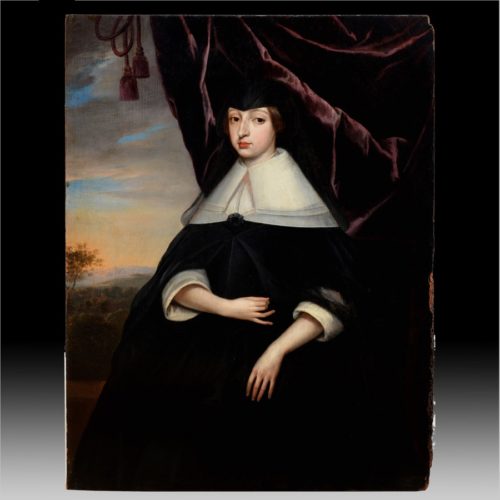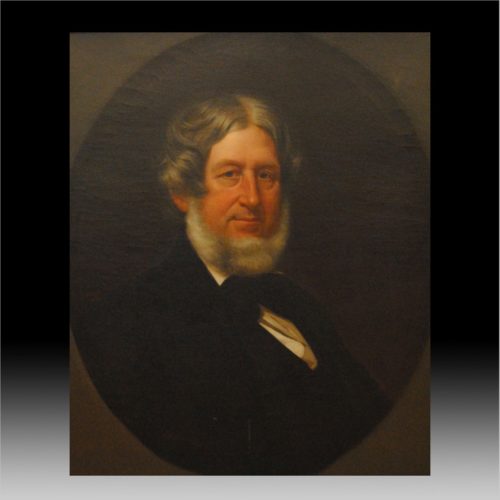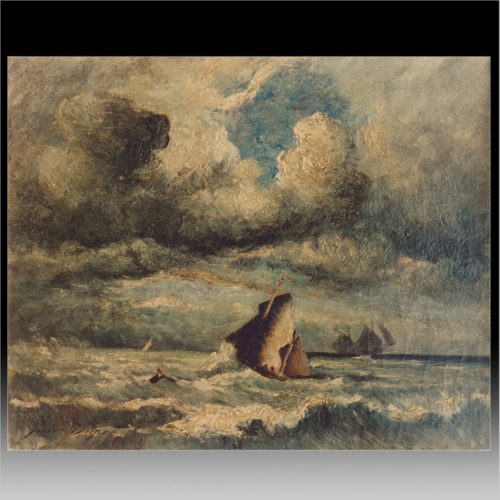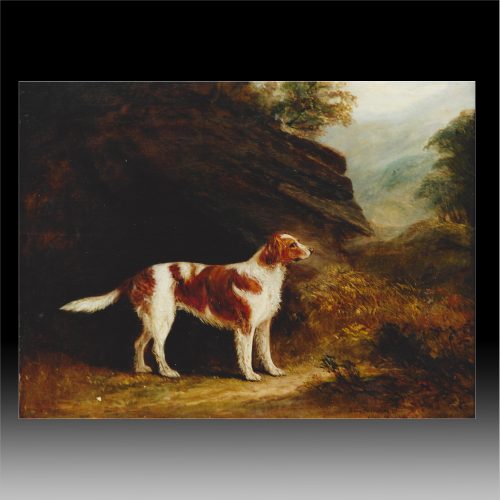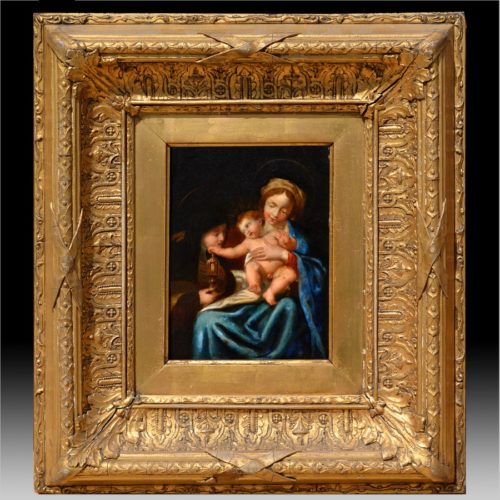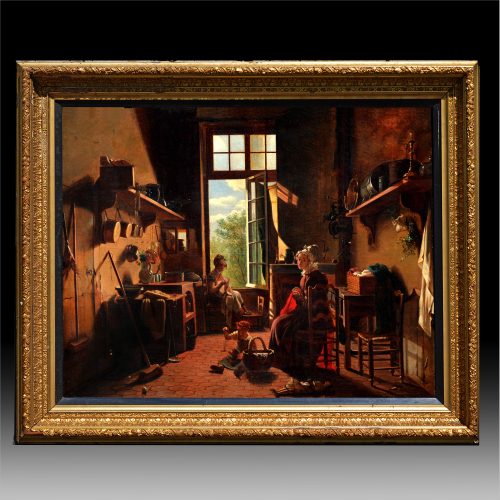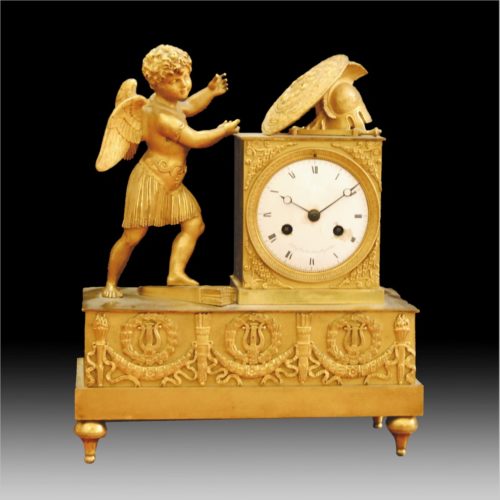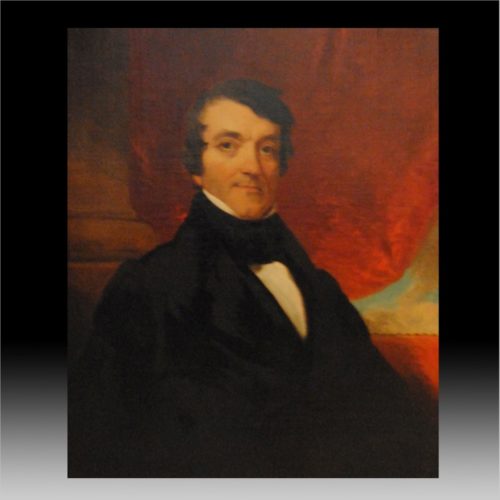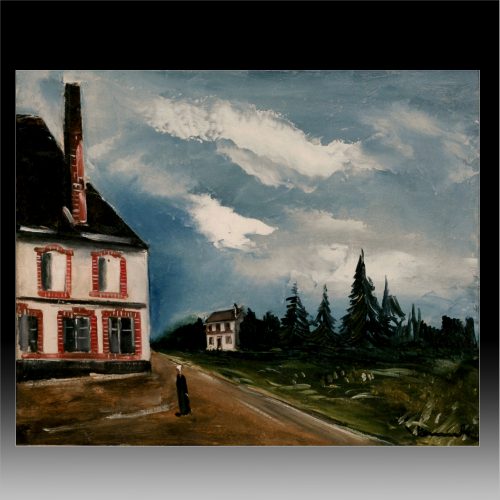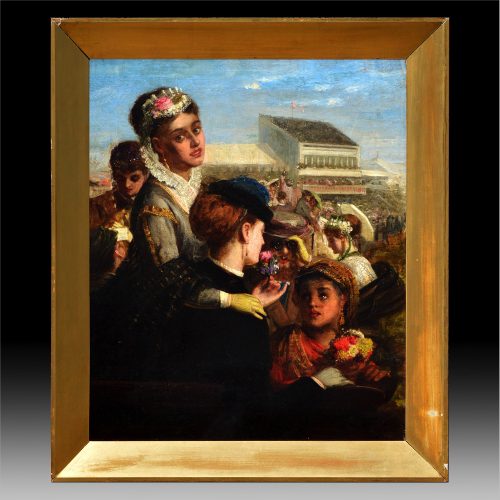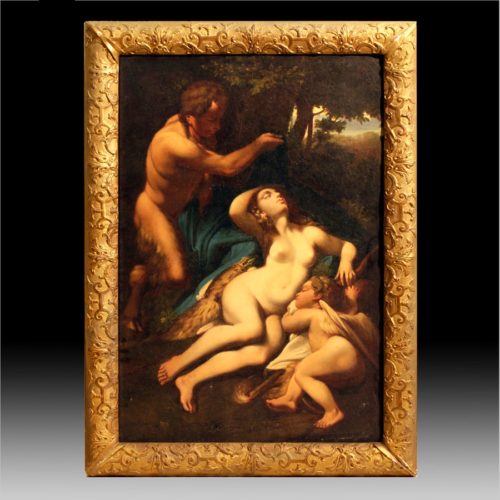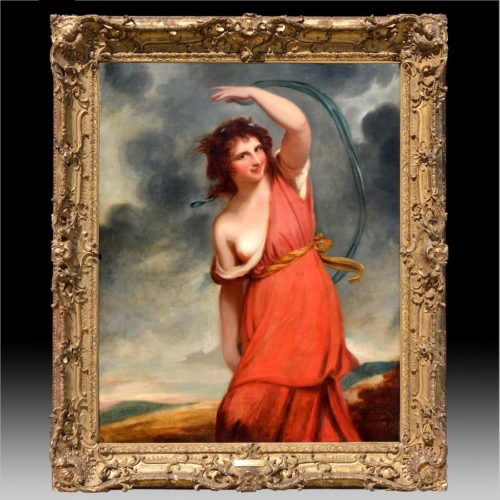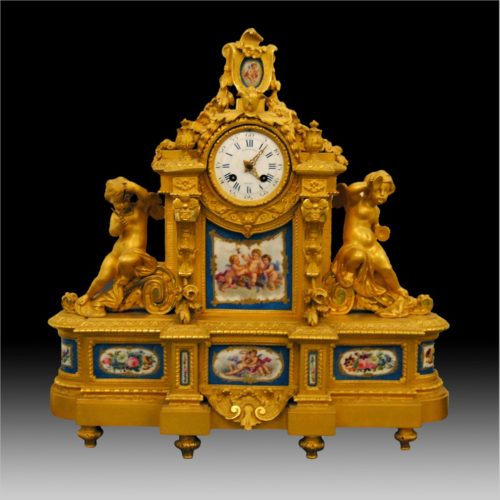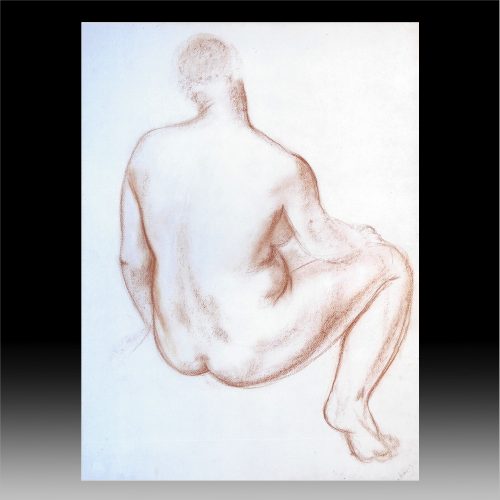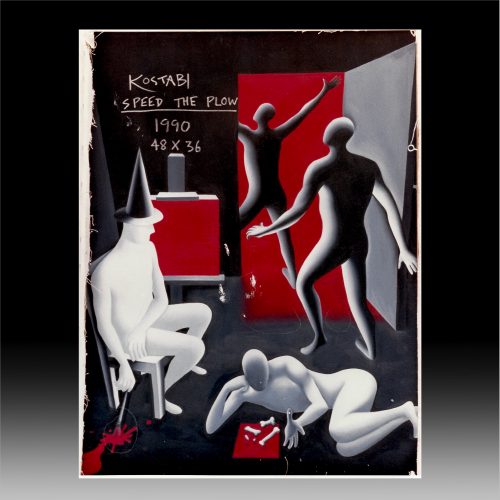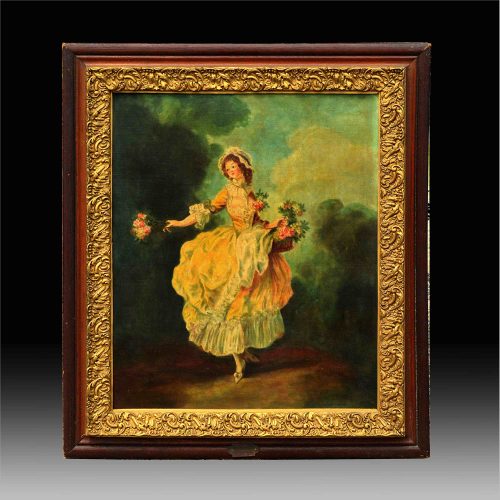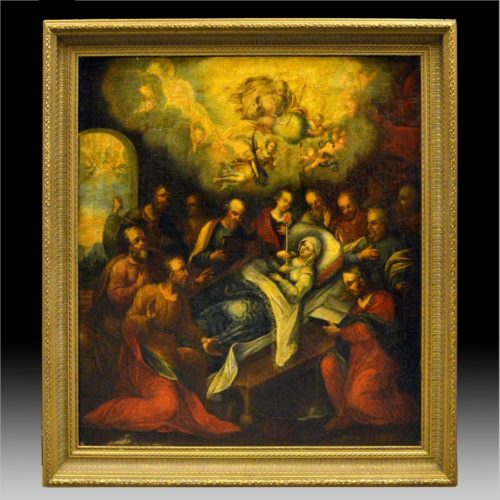- You cannot add ""Landscape with Figures"" to the cart because the product is out of stock.
-
Christian Georg Schütz (German, 1718-1791) “A River Landscape with a Boat Moored by a Cottage” Oil on board, oval 3 1/3 x 3 ¾ inches (8.6 x 9.5 cm) CL 201794-171 18841-2 @NB-1040 #92
-
Mantel Clock with Soldier Figure. Height: 22 inches Width: 17 inches Depth: 6 ¾ inches AC16000 F-1537
-
Jean Dufy (French, 1888-1964) “Le port” Oil on canvas 18 1/8” x 15” Painted in 1934 Signed lower right COA by L. Quesnel PROVENANCE: Max Bodner, NY Estate of Lena Wershaw, NY
-
Mark Kostabi (American, b. 1960) “Speed The Plow” Oil on canvas 48”x 36” Executed in 1990 Signed and dated lower right on the front.
-
Artist Unknown Portrait of a Man 20" x 16" Oil on board
-
Anthony Van Dyck “Portrait of a Lady, Possibly a beguine” oil on canvas 17 ¼” x 12 ¾” (43.8 x 32.4 cm) Sir Anthony van Dyck (22 March 1599 – 9 December 1641) was a Flemish Baroque artist who became the leading court painter in England, after enjoying great success in Italy and Flanders. He is most famous for his portraits of Charles I of England and his family and court, painted with a relaxed elegance that was to be the dominant influence on English portrait-painting for the next 150 years. He also painted biblical and mythological subjects, displayed outstanding facility as a draughtsman, and was an important innovator in watercolour and etching. The Van Dyke beard is named after him. S71791-207 966007-3
-
John George Brown 1831-1913 Portrait of a Man Oil on canvas 25” x 30” John George Brown (November 11, 1831 – February 8, 1913) was a British citizen and an American painter born in Durham, England on November 11, 1831. His parents apprenticed him to the career of glass worker at the age of fourteen in an attempt to dissuade him from pursuing painting. He studied nights at the School of Design in Newcastle-on-Tyne while working as a glass cutter there between 1849 and 1852 and evenings at the Trustees Academy in Edinburgh while working at the Holyrood Glass Works between 1852 and 1853. After moving to New York City in 1853, he studied with Thomas Seir Cummings at the National Academy of Design where he was elected a National Academician in 1861. Brown was the Academy's vice-president from 1899 to 1904. Around 1855, he worked for the owner of the Brooklyn Glass Company, and later he married the daughter of his employer. His father-in-law encouraged his artistic abilities, supporting him financially, letting Brown pursue painting full-time. In 1866, he became one of the charter members of the Water-Color Society, of which he was president from 1887 to 1904. Brown became famous for his depictions of street urchins found on the streets of New York (bootblacks, street musicians, posy sellers, newsboys, etc.). @AC-NB
-
Jules Dupre (French, 1811-1889) ”Sailing Ships on Choppy Seas” Oil on Canvas 15”x 18 ” Signed lower left
-
John Ferneley Jr. (British, 1815-1862) In Search of the Hunt Signed and dated ‘John Fernely Jr./ 1849’ lower right. Oil on canvas. 17 x 22 in. (43.2 x 56 cm)
-
Studio of Martin Drolling (French, 1752-1817) “A Kitchen Interior with a Mother and Daughter Sewing and Another child Playing with a Kitten” Oil on canvas 25 ¼” x 31 ½” PROVENANCE: W. Scott & Sons, MontrealAC15384 (AC from artnet: sold price on 12/14/98) @AC-Bdwy
-
A Restored Ormolu Mantel Clock, Second Quarter 19th Century. The circular dial is with Roman numeral characters. Signed, “Le Roy hr. du Roi Palais Royal a Paris.” Height: 12 ¼ inches. CMR1496-2-17 AC6440
-
American School “Portrait of Gentleman”- Estate of Lincoln Isham Oil on canvas 25” x 30” Provenance: Park Bernet 3/30/72 @AC-NB
-
Maurice de Vlaminck ( French, 1876-1958) “L’entrée Du Village” Oil on canvas 23 ½”x 28 ½” Signed lower right COA by G. Petrides
-
William Holyoake (British, 1834-1893) "A Day at the Races" Oil on canvas 24 x 20 inches (61 x 51cm)
-
Antonio Allegri, il Coreggio “Venus, Cupid and a Satyr” Oil on Canvas 32” x 21 ½” (81.3 x 54.7 cm) CL102794-126 564601-2 @Albertson (5/19/03)
-
George Romney 1734-1802, British “Portrait of Emma Hart, Lady Hamilton, As Mirth” Oil in canvas 56 ½” x 45 ½” 143 X 115 cm Provenance: J.C. Curwen, M.P., Workington Hall, Cumberland, by whom acquired from the artist 1st Earl of Lichfield, Orgreave hall, Lichfield Thomas Challoner, Chester, (Sale: Christie’s, London, July 10, 1897) there purchased by Thos. Agnew and Sons, Ltd., London Duven Bros, New York, by 1929 until at least 1933 C.J. Wertheimer E.G. Raphael S101091-131 1667501-3 @AC-NB 1040 2/14
-
A Gilt Bronze and Porcelain Mantel Clock, circa 1860. The white enamel dial signed RAINGO Fres A PARIS, the movement with bell strike, the case with matt and burnished gilding possibly by Henri Picard, not stamped SO 102802-198 AC29600 F-1247
-
André Derain (French, 1880-1954) “Nu assis de dos” Red chalk on paper mounted on board 25” x 18 ½” Signed bottom right COA by M. Kellermann PROVENANCE: D.G. Kelekian, NY Estate of Elizabeth Norcott Exhibited Paris, Le Petit Palais, 1937 Chicago, the art institute, 18th International exhibition of watercolors, pastels, drawings and monotypes, March-May, 1939, no. 119 Minneapolis, Art Institute, 1940
-
Mark Kostabi (American, b. 1960) “Speed The Plow” Oil on canvas 48”x 36” Executed in 1990 Signed, titled and inscribed upper left on the back
-
Artist Unknown, 19th Century Lady in Nature 19¼ x 24 in. Frame with Plate of Artist and Title, but hard to decipher.

